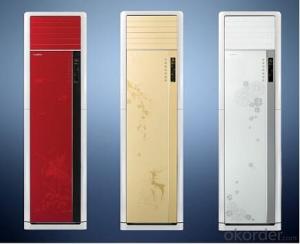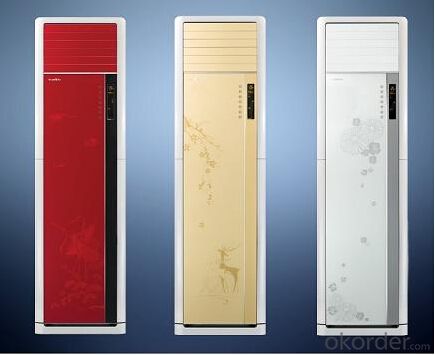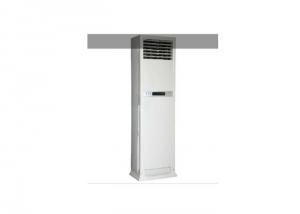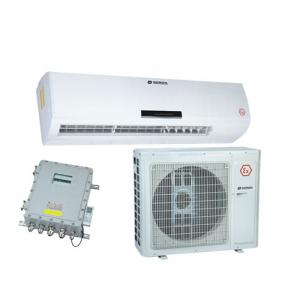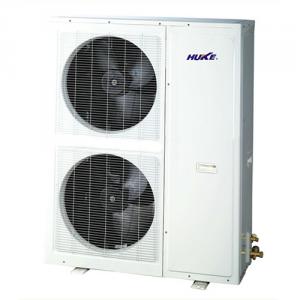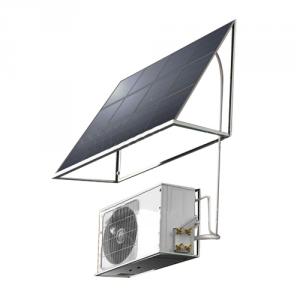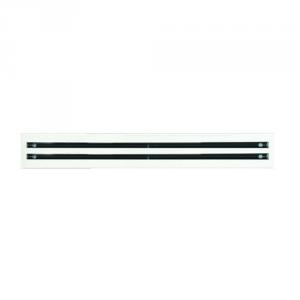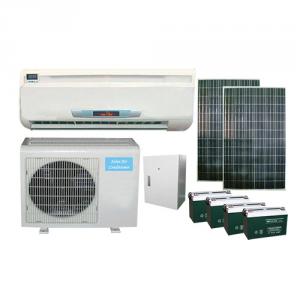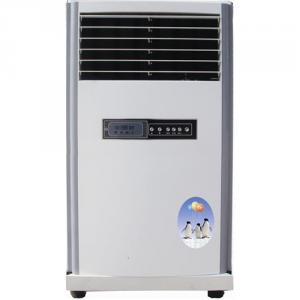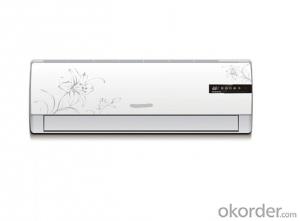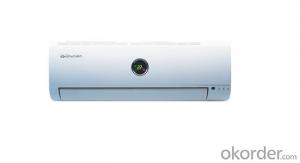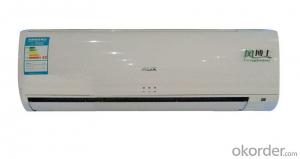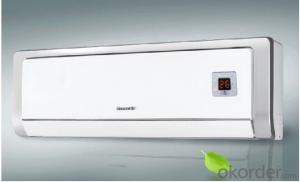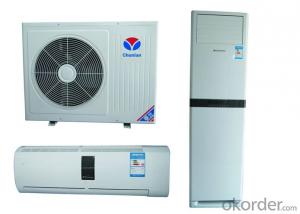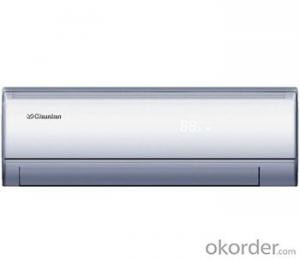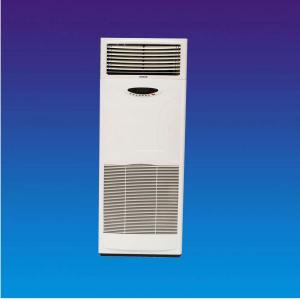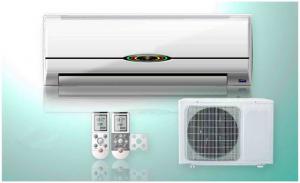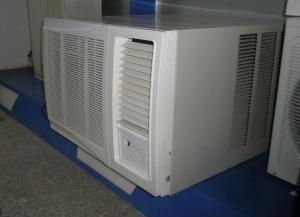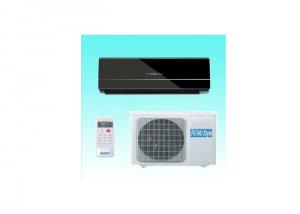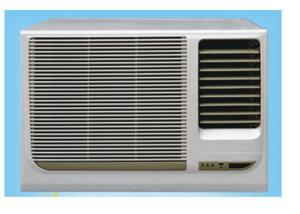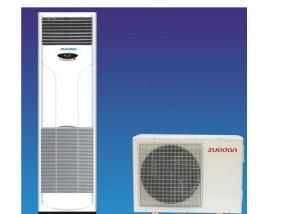Air Conditioner Wall Mounted Split 2.5ton CS-30H/BVJ-6
- Loading Port:
- Shanghai
- Payment Terms:
- TT OR LC
- Min Order Qty:
- 1 unit
- Supply Capability:
- 15 unit/month
OKorder Service Pledge
OKorder Financial Service
You Might Also Like
Quick Details
| Condition: | New | Brand Name: | CNBM | Place of Origin: | Jiangsu China (Mainland) |
| Use: | Room | Power Source: | Electrical | Power Type: | AC |
| Type: | Split Wall Mounted Air Conditioners | Cooling/Heating: | Cooling/Heating | Certification: | CB,CE,EMC,RoHS |
| Capacity (btu): | 30000 | COP: | 2.8 | EER: | 2.8 |
| Power (W): | 3350 | Voltage (V): | 220 | Model Number: | CS-30H/BVJ-6 |
| Cooling Capacity: | 2.5ton | Pipe Size: | 3/8" + 5/8" | Outdoor Size: | 800x253x646 |
| Indoor Size: | 1014x213x320 | Condenser: | Pure Copper | Connecting Pipe: | Pure Copper |
| Cable: | 3m | Compressor type: | Rotary | Loading Quantity: | 154sets (40HQ) |
| Application Area: | 40-60m2 |
Packaging & Delivery
| Packaging Detail: | Carton Box Packing |
| Delivery Detail: | 30-45 days after receiving down payment |
Specifications
Wall mounted air conditioner :
1, R22
2, 30000BTU (2.5ton) ;
3, Cooling only/Cooling& Heating ;
4, 220V 50HZ.
Wall Mounted Split Air Conditioner 2.5ton (30000BTU)
1) Reliable quality---professional assembling and sufficient test, defective rate below 0.05%.
2) High quality compressors and parts with guarantee;.
3) Delivery: Within 45days after confirming the L/C or T/T swift copy.
4) Certificate--- CE, RHOS,MEPS, SAA, C-TICK, EMC, BV, SGS, ISO9001,SAA,CB, etc..
5) Compressor Brand: CHUNLAN, TOSHIBA, RCHI
6) 1% free parts of the total FOB amount.
7)OEM service.
- Q: Yituo 2 how to install air conditioning
- If the wall hang up and ark or hoisting machine, can be installed after decorating, these won't destroy decorate. If it's convenient for installation, refrigeration pipe don't need to implement into!
- Q: Can an air conditioner help reduce the risk of heat stroke?
- Yes, an air conditioner can help reduce the risk of heat stroke. Heat stroke occurs when the body is unable to regulate its temperature, usually due to prolonged exposure to high temperatures and humidity. Air conditioners can help lower the temperature in indoor spaces, creating a more comfortable and cooler environment. This helps prevent the body from overheating and reduces the risk of developing heat stroke. Air conditioners also reduce humidity levels, which further aids in maintaining a comfortable and safe temperature. Additionally, air conditioners improve air circulation, which can prevent the buildup of stagnant hot air and promote cooling. Therefore, using an air conditioner can be an effective measure to reduce the risk of heat stroke, especially during hot and humid weather conditions.
- Q: Automotive air conditioning and home air conditioning. Whether can be used as cleaning agent
- Slowly but it is better to use water to wash, cleaning agent is not good for the machine after being washed. If you want to use can also, diluted, don't be too thick. Wash power when you need to, don't let water touch the PC board, PC board dust stained with alcohol swab washed over there
- Q: Why are some called the central air conditioning air conditioning?
- Central air conditioning and central air-conditioning: refers to set of air conditioning heat and cold source machine to supply the dispersed air conditioning supply of cold and heat source system. Compared with the decentralized air conditioning, has high thermal efficiency, low price, convenient management. Popular said, relative to household air conditioner, central air conditioning is by one or a few big air conditioning unit concentrated provide cold and heat source, and then through the form of hot air or hot water will be these cold quantity or heat to each room.
- Q: Useful three-phase electric air conditioning is what kind of?
- Ha ha, is really too much, more than 3 p and 3 p is 380 v three-phase power!Have a group of 3 p and 5 p
- Q: How do I prevent ice buildup on my air conditioner coils?
- To prevent ice buildup on your air conditioner coils, there are a few steps you can take: 1. Regularly clean and maintain your air conditioner: Make sure to clean the filters, evaporator coils, and condenser coils regularly. Dust, dirt, and debris can accumulate on the coils, reducing airflow and causing ice formation. Use a soft brush or a vacuum cleaner to remove any buildup. 2. Ensure proper airflow: Check that all vents and registers are open and unobstructed. Restricted airflow can cause the evaporator coils to become too cold, leading to ice formation. Additionally, ensure that there are no furniture or objects blocking the airflow around the indoor and outdoor units. 3. Check for refrigerant leaks: Low refrigerant levels can cause the evaporator coils to freeze. If you notice ice buildup frequently, it may be a sign of a refrigerant leak. In such cases, it is advisable to call a professional HVAC technician to identify and fix the leak. 4. Maintain a suitable thermostat setting: Adjust your thermostat to a temperature that is not too low. Extremely low temperatures can cause the evaporator coils to freeze. Aim for a comfortable temperature range to prevent ice buildup. 5. Use a programmable thermostat: A programmable thermostat can help regulate the temperature and prevent the system from running excessively, which can lead to ice formation. Set the thermostat to maintain a consistent temperature and avoid drastic temperature fluctuations. 6. Keep the area around the outdoor unit clean: Ensure that the outdoor unit is free from debris, such as leaves, grass, or dirt. Clear any vegetation or other obstructions around the unit to allow proper airflow. 7. Schedule regular maintenance: It is advisable to have your air conditioner inspected and serviced by a professional technician at least once a year. They can identify any potential issues and perform necessary maintenance to keep the coils clean and prevent ice buildup. By following these preventive measures, you can minimize the risk of ice buildup on your air conditioner coils and ensure optimal performance of your cooling system.
- Q: Which band air-conditioning energy efficiency is best
- Because power consumption is certain. Why power consumption must be? This is the key to the problem, because is a fixed frequency compressor, power consumption must be so, manufacturer just increases the refrigerating capacity. As a result, it can be seen that air conditioning can effect comparing high aren't necessarily must save electricity. Is variable frequency and frequency conversion air conditioning compressor, will surely save electricity, but beware, frequency conversion air conditioning must choose dc frequency conversion air conditioning, can save electricity above 50%.
- Q: Can an air conditioner be used in a concert venue?
- Yes, an air conditioner can be used in a concert venue. Concert venues, especially indoor ones, often require proper ventilation and temperature control to ensure the comfort of the audience and performers. Air conditioning systems can help maintain a cool and comfortable environment, which is particularly important during hot summer months or in crowded spaces where body heat can raise the temperature significantly. Additionally, air conditioners can also help regulate humidity levels, which can affect the quality of sound in the venue. Adequate ventilation and temperature control contribute to a more enjoyable and pleasant concert experience for all attendees.
- Q: What is the latest technology air conditioning?
- The principle has no technology breakthrough. Frequency converter should be compared to constant speed machine advanced technology.
- Q: Which master know why household air conditioning Wells, drilling Wells have what effect?
- of course, it is definitely not like some people don't understand the principle that can increase the humidity (how much water flow in, how much water will be out, didn't reduce.) it will reduce indoor humidity. All of these and conventional air conditioning. A pump is available for three hanging air conditioning or 1-2 sets cabinet air conditioning used at the same time. It is more save electricity! (3 room 4-7 hours once electricity!!) Natural air conditioning geothermal air conditioning only water pump and air conditioning fan consumes little power, can effect comparing 1:25 above is one of the most energy saving air conditioning. Shallow groundwater is close to the local average atmospheric temperature throughout the year, with warm in winter and cool in summer seasons constant temperature characteristics, almost not influenced by air temperature
Send your message to us
Air Conditioner Wall Mounted Split 2.5ton CS-30H/BVJ-6
- Loading Port:
- Shanghai
- Payment Terms:
- TT OR LC
- Min Order Qty:
- 1 unit
- Supply Capability:
- 15 unit/month
OKorder Service Pledge
OKorder Financial Service
Similar products
Hot products
Hot Searches
Related keywords
